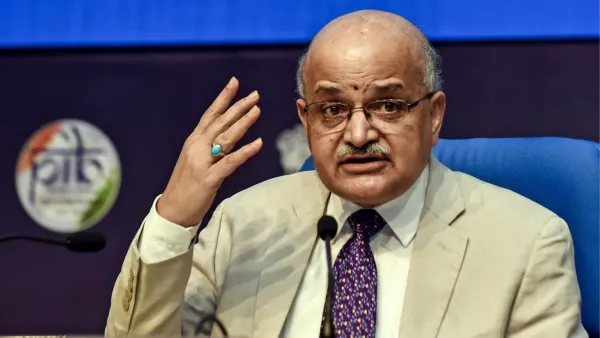
NITI Aayog Chief Executive Officer (CEO) BVR Subrahmanyam said that India has overtaken Japan to become the world’s fourth-largest economy, citing data by the International Monetary Fund.
Addressing a press conference of the 10th NITI Aayog Governing Council Meeting on ‘Viksit Rajya for Viksit Bharat 2047’, Subrahmanyam stated that India’s economy has reached the USD 4 trillion mark, news agency ANI reported.
“We are the fourth largest economy as I speak. We are a USD 4 trillion economy as I speak, and this is not my data. This is IMF data. India today is larger than Japan. It’s only the United States, China, and Germany that are larger, and if we stick to what is being planned, what is being thought through, it’s a matter of another two-three years; we would become the third largest economy,” Subrahmanyam said, according to ANI.
According to the IMF’s April edition of the World Economic Outlook report, the nominal GDP for fiscal 2026 is expected to reach around USD 4,187.017 billion. This is marginally more than the likely GDP of Japan, which is estimated at USD 4,186.431 billion.
India was the fifth-largest economy in the world until 2024.
The global financial body projects that India will remain the fastest-growing major economy over the next two years. India’s economy is expected to grow by 6.2 percent in 2025 and 6.3 percent in 2026, maintaining a solid lead over global and regional peers, the April 2025 edition of the IMF’s World Economic Outlook added.
India is projected to remain the fastest-growing large economy for 2025 and 2026, reaffirming its dominance in the global economic landscape.
In contrast, the IMF projects global economic growth to be much lower, at 2.8 percent in 2025 and 3.0 percent in 2026, highlighting India’s exceptional outperformance.
NITI Aayog CEO further said India is at a turning point and at a take-off stage where it can grow very, very rapidly, and added that the Centre and States discussed the strategies for manufacturing services, rural, non-farm, urban and green economy sectors.
“We had sub-themes for manufacturing services, rural, non-farm, urban, informal, and the green economy, as well as the circular economy. These were the broad themes that were there,” ANI quoted Subrahmanyam as saying.